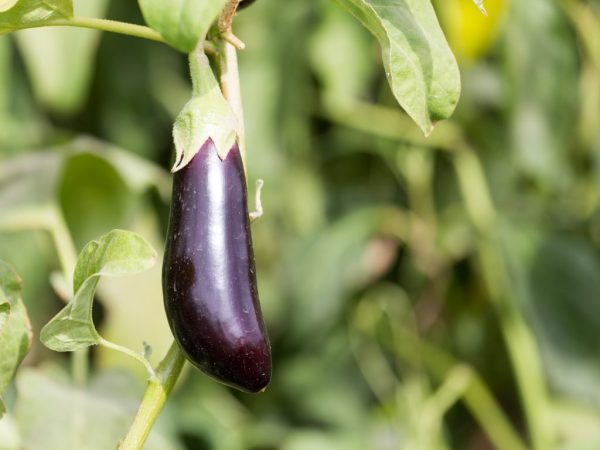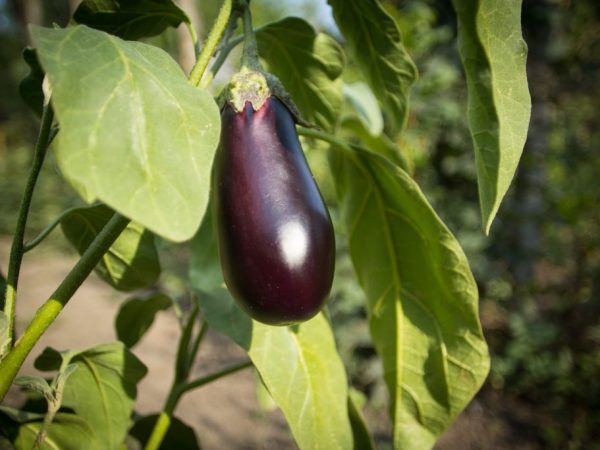At what temperature to grow eggplants
Eggplant is whimsical to the environment, and also needs nutrients in the soil. The optimum temperature of the eggplant seedlings allows you to grow a healthy crop.

Eggplant growing temperature
Selection of seeds for planting
The first step is to pay attention to the choice of eggplant seeds and prepare them for planting.
The purchase of quality seeds is the basis for a good harvest. It is better to purchase planting material in specialized institutions.
The main factors of choice:
- If you prefer to purchase seeds on the market, take only from trusted sellers.
- When choosing a variety for sowing, give preference to those plants that have been bred for a specific climate. For example, hybrids that are recommended for growing in the middle lane can withstand slight temperature changes and increased humidity levels.
- When choosing planting material, pay attention to the integrity of the packaging. Tears, color fading, paint drips indicate improper storage of seeds.
- The next point is the expiration date. Eggplant seeds can be stored for up to 5 years. But buying fresher crops increases the chance for good shoots.
- The purchase of treated seeds (granulated, glazed, coated, encrusted) is a great advantage, because the special shell that appears around the seeds contains a large number of various substances that contribute to rapid germination. Such material does not need additional processing and disinfection.
- It is better to buy several types of seeds. In this case, the chance for good sprouts to appear increases significantly.
Preliminary preparation of seeds
If you prepare seeds in advance, you can speed up the growing process, prevent various diseases and get the highest quality and richest harvest. Pre-planting processing includes a number of activities.
Calibration and expiry date
First of all, we sort the seeds by size, separate the large from the small ones. This allows you to grow friendly seedlings and a larger yield. Seeds of the same size germinate and yield the same crop for the reason that at the time of growth, more and more nutrients are absorbed, respectively, those that germinate earlier absorb more substances than those that have not yet emerged. Thus, they inhibit the development of other seeds.
It is believed that small seeds should be thrown away and only large ones left. This is a myth, just plant seeds that are approximately equal in size, so they are easier to grow.
Inspect the material carefully. Ideal seeds for planting are light beige in color without holes or damage. If the kernels have damaged spots, spots, or an unusual color, weed them out.
After a visual inspection, you need to check the seed material for germination.To make sure that something will grow out of them, we place them in the seed solution for about 10-15 minutes. Those that remain on top are thrown away, the rest are dried and prepared for the next stage.
Disinfection of seeds

Plants need good care
Before growing plant seeds, disinfect them with a manganese solution in order to reduce the likelihood of diseases or heat treatment
For disinfection in the second way:
- Soak in warm (over 45 °) water for 10-15 minutes.
- Pour into cold water for a couple of minutes.
- We place it in a ready-made solution of trace elements for 12 hours.
- We move it to the refrigerator or another cold and dry place for a day and dry it well.
The recipe for a solution that will replace the purchased one: 2.5 gr. dilute wood ash in 0.5 l. water. If there is no ash in the arsenal, use a nitrophosphate. The effectiveness of the home solution is less, but the composition is natural.
Basic landing requirements
For eggplants to grow well, they need a fertile plot of land and a regime.
They do not tolerate stagnant moisture and heavy clay soil. The main need is an airy, loose and nutritious soil.
Do not plant a crop in beds where tomatoes, potatoes and the like were previously located, because they are attacked by similar infections. It is better to grow seedlings after peppers, cucumbers, legumes, melons, pumpkins. After them, a nutrient medium remains - this also applies to pepper, despite similar diseases with eggplant.
Temperature
The recommended temperature regime for planting eggplant is -15-30 ° C. Vegetables love warmth and at temperatures below 15 ° C, the sprout loses leaves and can completely deteriorate, it is recommended that the temperature rises to 30 ° C during planting. You should not rush to plant in a greenhouse or in an open space, in the middle Russian lane the favorable time comes in late May and early July.
Seedling care
After the appearance of the first shoots, we correct the temperature regime.
During the day from 23 ° C to 27 ° C, and at night 14-18 ° C. Minimal differences are necessary to harden the root system of the future vegetable.
Another plus of such a drop is getting used to low temperatures of seedlings, and hence the chances are great that it will not freeze or disappear, especially in the climate in our country.
Additional requirements
As a rule, there is not enough natural light for stable growth and development of seedlings. It is most correct to use phytolamps, but ordinary fluorescent lamps are also suitable.
Additional lighting is required so that the sprouts do not stretch out and become pale and weak. This condition can be called a prophylaxis against various infections for seedlings already planted in open ground.
The second additional condition for seedling care is top dressing.
Many experts recommend the following types of feeding if necessary:
- the first feeding should take place without a pick, as well as on the 7-10th day after the emergence of shoots, and when using a pick, the optimal days are 10 and 11 9 after the procedure);
- any of the following dressings are used to stimulate the growing season at intervals of 7-10 days.
Each top dressing is combined with watering, this is the only way to grow high-quality seedlings.
All processes take from 50 to 70 days and, as a result, they get excellent seedlings for an open plot of land.
Conclusion
The temperature for young eggplant seedlings should be high, so transplanting is usually done either in the evening from 17 to 20 hours, or on a cloudy day. Also, in the first weeks, it is necessary to shelter each seedling from direct rays of sunlight; for this, either a greenhouse film or paper cones-lids are used.

